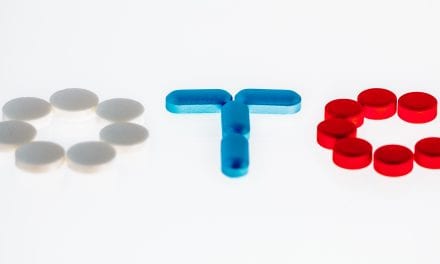Staff Standpoint | November 2018 Hearing Review
It was a surprise to everyone in the industry. On October 5, the FDA granted De Novo status to Bose Corporation for a self-fitting hearing aid for mild-to-moderate hearing loss (see p 8). The De Novo application process—which is closed to the public—is available for those devices proven to be low-risk and effective but that do not “fit into” a current FDA device category. The FDA’s announcement caused a lot of confusion primarily because all the previous buzz had been focused on the FDA’s work in establishing an over-the-counter (OTC) hearing device classification, which has a deadline of August 2020 as mandated by the OTC Hearing Aid Act of 2017. So, it’s important to realize that the Bose Hearing Aid represents a new self-fitting category that is completely separate from the upcoming OTC hearing device classification. Currently, there is no such thing as an OTC hearing aid—and no company should be marketing one (see “FDA Issues Letter to ‘OTC Hearing Aid’ Manufacturers” in the September 2018 HR, p 8). In short, the Bose Hearing Aid is a self-fitting air-conduction wireless hearing aid—a new type of FDA Class II medical device.
In early October, I spoke with three leaders from Bose Hearing who are spearheading their entry into hearing healthcare. Here is what I came away with:
Hearphones will not be marketed as a Bose Hearing Aid, and the new product will not assess hearing status. After the announcement by the FDA, there was confusion in the industry that Bose would be repackaging its Hearphones as a “hearing aid.” Bose went to some lengths to clarify this, because they say that the Bose Hearing Aid in the De Novo grant did borrow from the Hearphones’ technology and platform. But it’s unlikely their hearing aid will look like Hearphones.
Bose has in-house experience in developing and validating novel ways of fitting hearing aids. Long-time research audiologist and educator Dianne Van Tasell, PhD—who retired from Bose last month—was one of the key developers of UnitedHealth’s hi HealthInnovations’ Home Version hearing test, which did not rely on a calibrated hearing test (see her article in the January 2012 Hearing Review). This online hearing test was implemented on, but later taken down from, the hi HealthInnovation’s website after the FDA issued a letter stating that it had not been approved via 510(k) clearance. Dr Van Tasell subsequently was a principal in Ear Machine, a startup company that developed self-fitting technology that did not require a hearing test. Ear Machine and its technology were acquired by Bose in 2014 and implemented in Hearphones. The Bose self-fitting hearing aid in the De Novo grant also utilizes this self-fitting technology, and the leaders I spoke with emphasized that the method does not include measurement or estimation of hearing status.
Bose views its self-fitting hearing aid and the FDA De Novo application as being primarily focused on direct-to-consumer (DTC) distribution. pBose wishes to bring their self-fitting hearing device to “where the consumer is,” and thus make the greatest impact possible with its hearing aid. While they could not comment on any distribution strategy, they also said that any DTC strategy wouldn’t preclude distributing the hearing aid through professional dispensing channels. However, any involvement of dispensing professionals would be in addition to a DTC component—whatever form that would take. It should be pointed out that, while the FDA approves clearances for hearing aids, the distribution of hearing aids is generally regulated by the states.
It would appear the product is still some time away from being mass produced. What Bose’s timeline is, however, is anyone’s guess. Technically, the product is cleared immediately for marketing, keeping in mind the special controls and conditions specified by FDA (see HR online article, “New Self-fitting Hearing Aid Class and Special Controls Described by FDA Letter”). However, my hunch is that it may be awhile until we see the company actively marketing the aid. Other companies wishing to apply for the new FDA “self-fitting hearing aid” classification must get pre-market notification and wait for the summary publication of the special controls and conditions, as well as the clinical trial on which Bose’s De Novo application was based.
Because of the competitive factors involved when launching any new consumer electronics product, the Bose leaders were understandably careful not to say much to me regarding their product, distribution strategy, or future plans. However, they did express interest in working through the professional channel, and have just started distributing Hearphones through Oaktree Products, which in my view is good news—for all of us.
Citation for this article: Strom KE. Bose and self-fitting hearing aids. Hearing Review. 2018;25(11):6.






